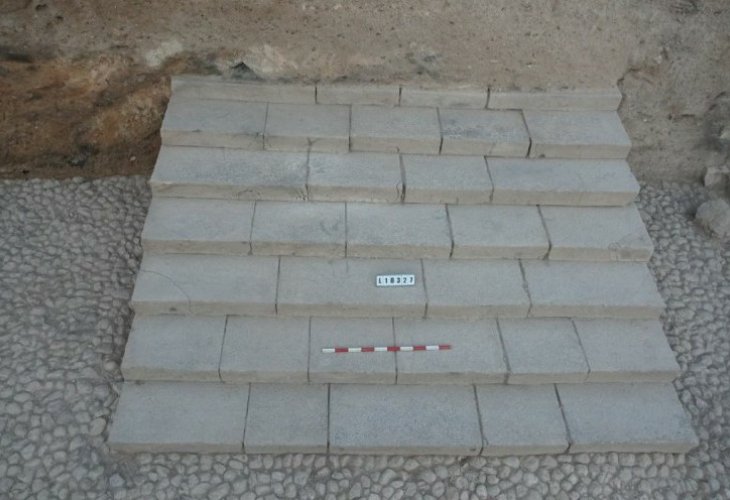Discovering the Ancient Steps of Hazor: A Peek into a Glorious Past
During the 30th excavation season at Tel Hazor, a majestic staircase was uncovered leading to the administrative palace of the ancient city: "This staircase is unique and impressive, hinting at the grandeur yet to be revealed."
 The rare steps (Photo: Hazor Diggings Foundation in memory of Yigael Yadin)
The rare steps (Photo: Hazor Diggings Foundation in memory of Yigael Yadin)In Tel Hazor, located in the Upper Galilee, the largest and most significant of Israel's biblical mounds, the 30th excavation season recently concluded. On the northern slopes of the upper city, facing towards the lower city, teams continued to uncover the administrative palace. This season, an elegant staircase was fully revealed, leading from a vast paved courtyard into the palace.
According to researchers, the staircase was constructed around 3,500 years ago, a rare find from the ancient Near East. It is approximately four and a half meters wide and built from basalt slabs. So far, only seven steps have been uncovered from the staircase, which likely leads to the main entrance of the palace. The palace was destroyed in the great fire that consumed all of Canaanite Hazor – described in the Book of Joshua – but its walls have survived to over two meters in height.
Tel Hazor is recognized as the largest and most important of the biblical mounds in the land and has been declared a UNESCO World Heritage Site. The conquest of Hazor by the Israelites, under the leadership of Joshua Ben Nun, after a battle against the northern cities led by Jabin, King of Hazor, paved the way for the settlement of the Israelite tribes in this region and to its north.
Excavations at the site began in the mid-1950s under Professor Yigael Yadin, continued in the late 1960s, and resumed in 1990 after a gap of about two decades. They are led by prominent researchers from the Hebrew University Institute of Archaeology – Israel Prize laureate in geography, research of the Land of Israel and archaeology, Professor Amnon Ben-Tor, and Dr. Shlomit Bechar, his partner in recent years of the excavations.
According to Professor Ben-Tor, "When it comes to biblical sites, the recently exposed steps at Hazor once again prove there is Hazor, and then there are all the other sites." Dr. Shlomit Bechar added, "The stairs reveal the power of the palace itself, once fully uncovered. We already know that the palace of Hazor – the largest and most significant Canaanite city in the southern Levant – will be architecturally powerful, but this staircase is unique and impressive, hinting at the grandeur yet to be revealed."
In the revealed parts of the palace, highly significant artifacts have been found, including Egyptian scarab seals, about 40 large storage jars evidencing extensive storage capacity, numerous basalt tools, raw materials related to the palace's workshops, and four royal inscriptions – three written in Egyptian hieroglyphs and one in Akkadian.
This year, in another excavation area, remains of the last Israelite Hazor, the city destroyed during the campaign of the Assyrian King Tiglath-Pileser, have also been revealed. A substantial number of smashed pottery vessels serve as archaeological evidence of this destruction. In the coming excavation seasons, the mission is expected to uncover additional parts of the city's administrative palace.

